Introduction:
The world’s dependence on fisheries as vital sources of nutrition and economic prosperity is as old as human civilization. In this article, prepared by the Vira team, we embark on a journey to explore different types of fisheries, provide interesting statistics on the fishing and production of packaged fish and shrimp, and shed light on their keeping conditions.
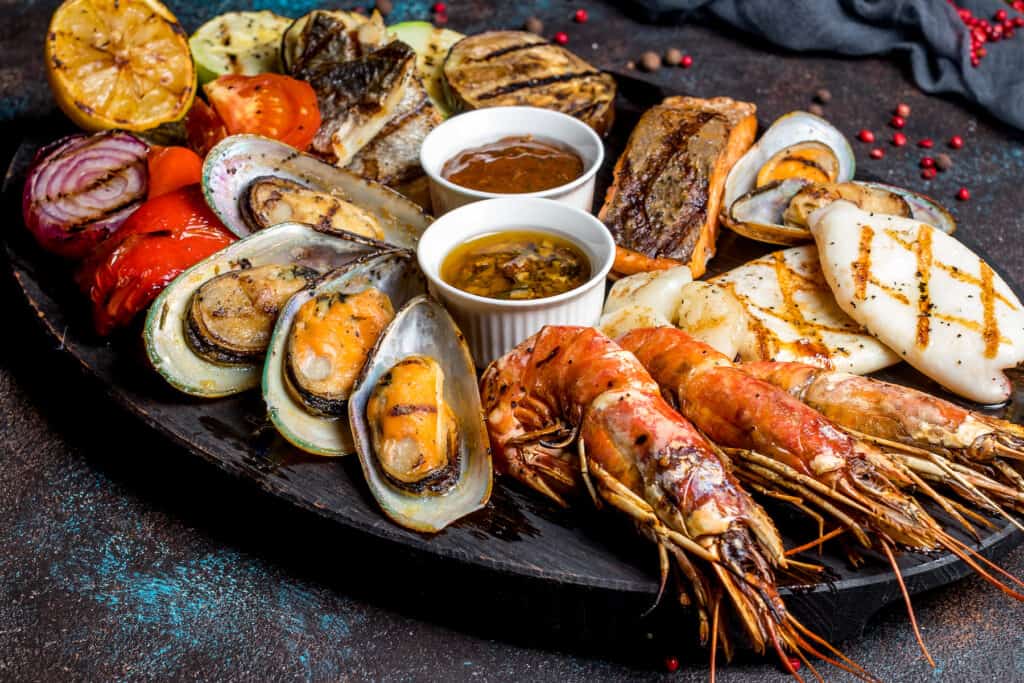
Enjoying the delicious taste of packaged fish and shrimp at home requires more than culinary expertise. This includes understanding the nuances of proper storage to preserve freshness, flavor, and nutritional value. In this how-to article, we’ll explore some practical tips and techniques to help you keep your favorite seafood treasures looking their best, and for an enjoyable dining experience every time. In addition, we will examine their global and local circulation statistics and draw attention to the fascinating dynamics of this industry.
Types of fisheries:
Fishing:
Capture fishing involves catching fish and other seafood from their natural habitats. The method is very diverse, from small-scale fishing to large-scale commercial operations. According to the report of the Food and Agriculture Organization (FAO), in 2021, the global production of caught fisheries reached about 80 million tons, which indicates the size of the sector.
Aquaculture:
Aquaculture or fish farming has seen significant growth in recent years. This method involves raising fish and shrimp in controlled environments. In 2020, the aquaculture sector accounted for more than 50% of the world’s total fish consumption, underscoring its vital role in meeting the growing demand for seafood.
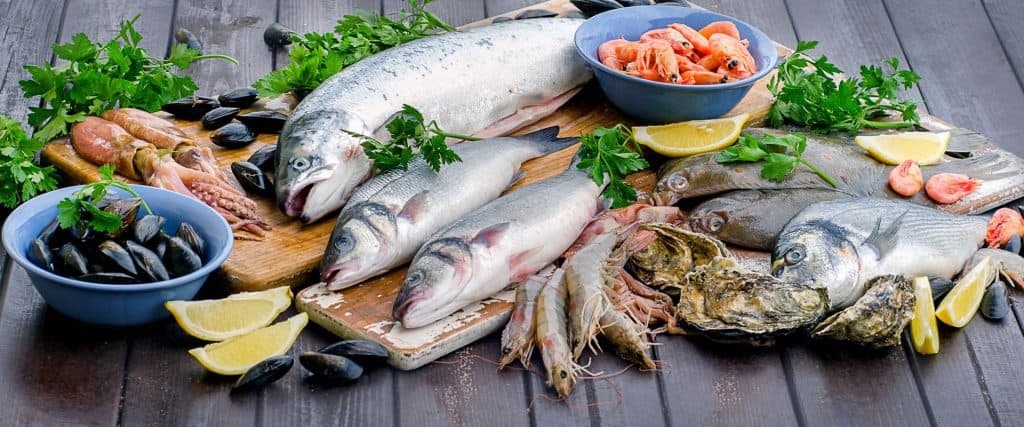
Inland Fisheries:
Inland fisheries are carried out in fresh water such as lakes, rivers, and ponds. These fisheries have a significant contribution to global fish production. According to the World Bank, inland fisheries provide essential nutrition for more than 60 million people worldwide, emphasizing its socio-economic importance.
Aquatics of the Persian Gulf:
Types of fish:
- Grouper:
A prized catch in the Persian Gulf, grouper is known for its delicious white meat and mild flavor. It lives on the rocky bottom of the bay, making it a popular target for both commercial and recreational fishermen.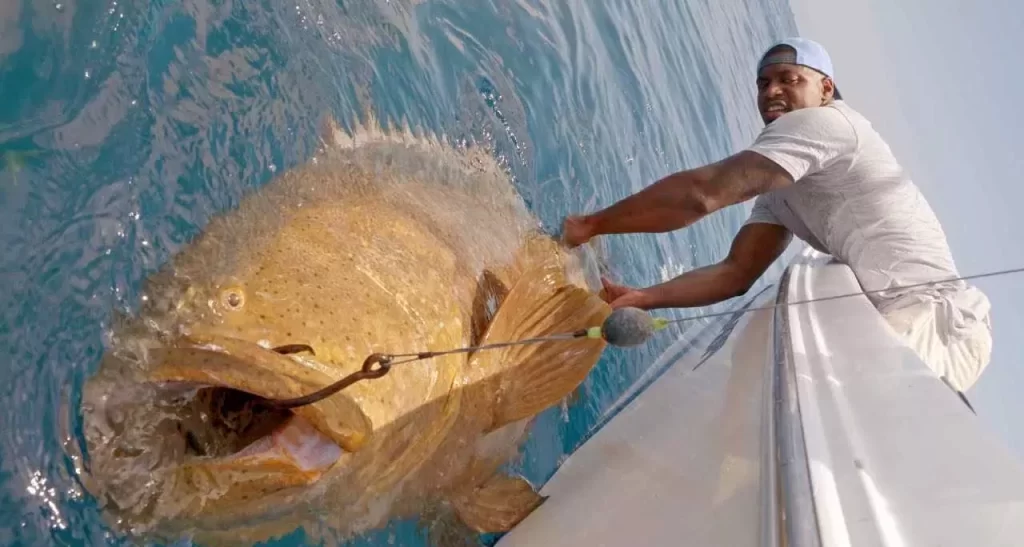
- Black and white pomfret:
Black and white pomfret is one of the most expensive, delicious, and richest seafood in the south of Iran. In terms of nutritional value, these two species provide a wide range of vitamins, essential minerals for the body, and useful fatty acids.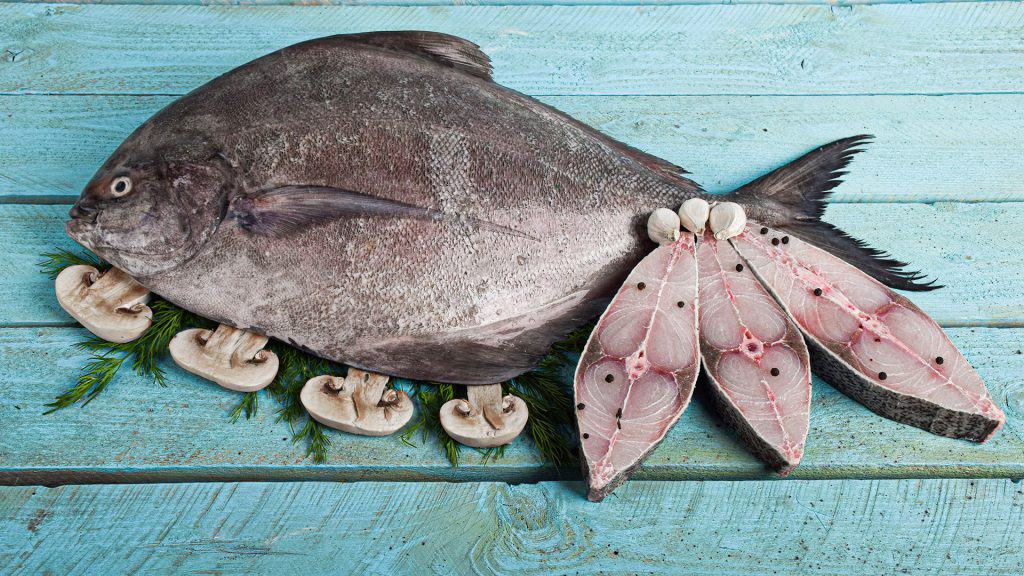
- Narrow-barred Spanish mackerel:
It is the name of a type of saltwater fish with a bony skeleton from the tuna family and the Spanish line fish genus. This fish is found in a wide area from the waters of Southeast Asia, China, Japan, Australia, and Oceania to the west along the northern coastal areas of the Indian Ocean to the eastern coast of Africa, the Middle East, the Persian Gulf, the Sea of Oman and the Mediterranean.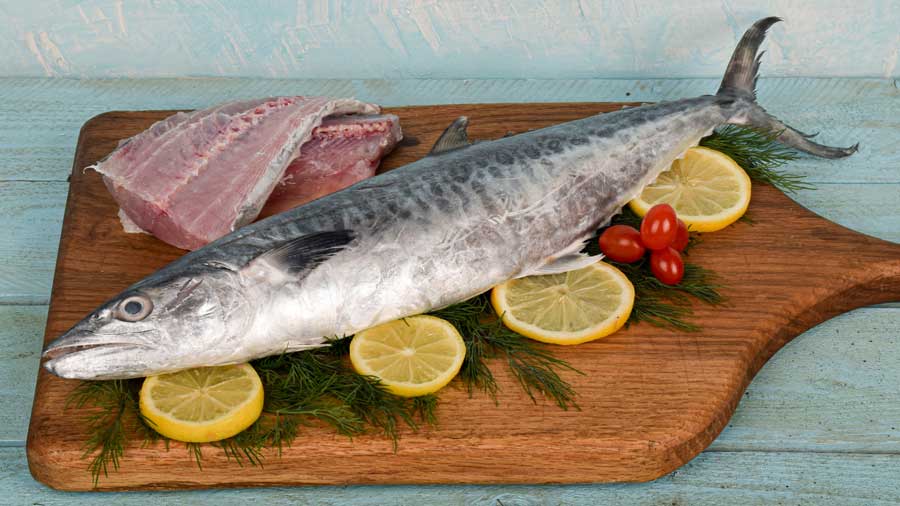
Narrow-barred Spanish mackerel has very fine scales and white flesh, and its meat texture is very soft and retains its softness after cooking. Therefore, it is a suitable option for cooking all kinds of seafood. This fish has much less waste than other fish, such as salted fish, Snapper, Koter, Jesh and other fish. Narrow-barred Spanish mackerel fillet has 65% pure meat without bones and blades and only 35% waste.
Shrimp species:
- White shrimp:
White shrimp, also known as Penaeus indicus, is abundant in the warm waters of the Persian Gulf. These sweet and juicy crustaceans are a culinary delight that are commonly used in a variety of dishes, from grilled skewers to savory stews.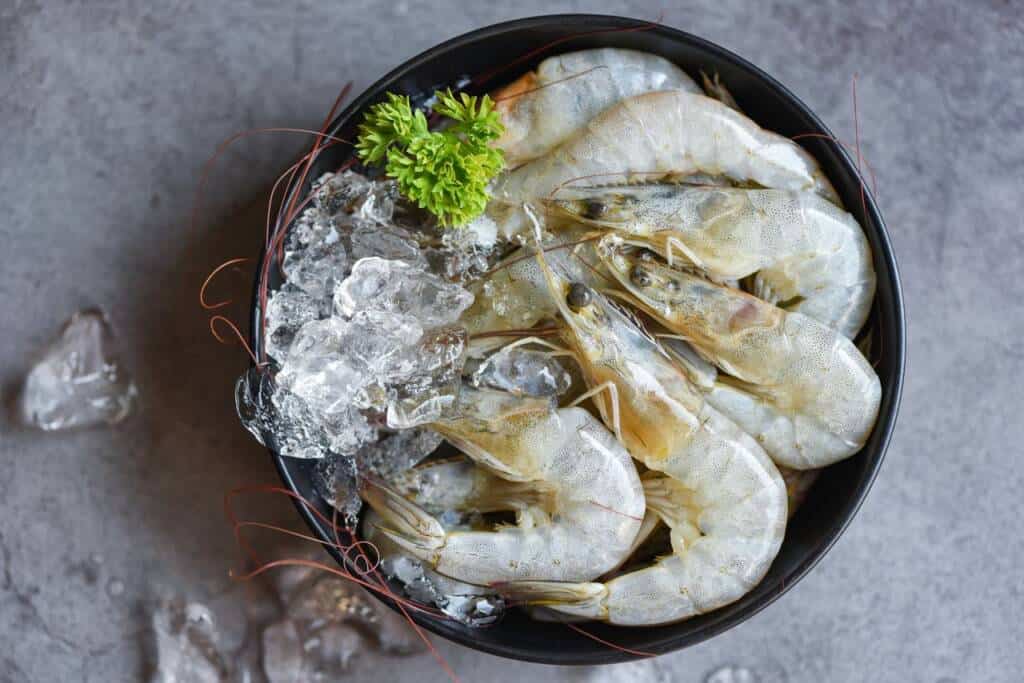
- Pink shrimp:
A smaller species, the pink shrimp, is characterized by its pinkish color and delicate flavor. Often used in salads, pasta or as a flavoring addition to soups, pink shrimp are a versatile choice for seafood lovers.
Aquatics of the Caspian Sea:
- Carp, a fish with a different frame
Carp, which is a spindle-shaped and wide fish, is caught from the marshes around the Caspian Sea. The maximum length of this fish reaches one meter and it is covered with large yellow scales. Also, because it lives in the marsh, it must be completely cleaned and its body odor removed before cooking. - Mullet, special for vegetable pilaf
Mullet is another type of fish from the north of the country, which is mostly consumed in smoked form and with vegetable pilaf. The cylindrical body of this fish is very long and covered with large scales. Proper consumption of northern mullet can help improve heart diseases, depression, insomnia, Alzheimer’s, cancer, etc.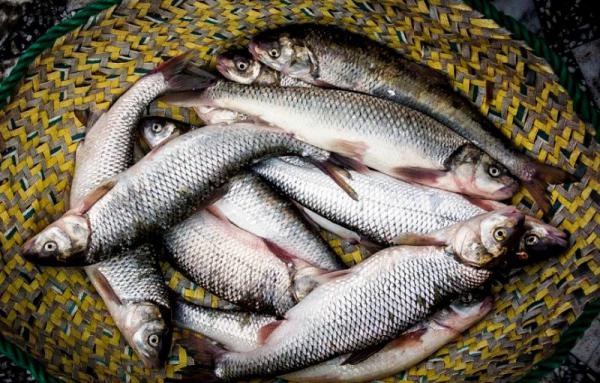
- Starry sturgeon, the most delicious boneless fish in the north
Ozonbron is the name of another North Sea fish that is mostly caught because of its caviar. Of course, its internal meat is completely white and consistent and has a delicious taste. This type of fish and its caviar provide nutrients the body needs and prevent diseases such as cancer, stroke, iron deficiency, etc. It is better to fully flavor the starry sturgeon and eat it grilled.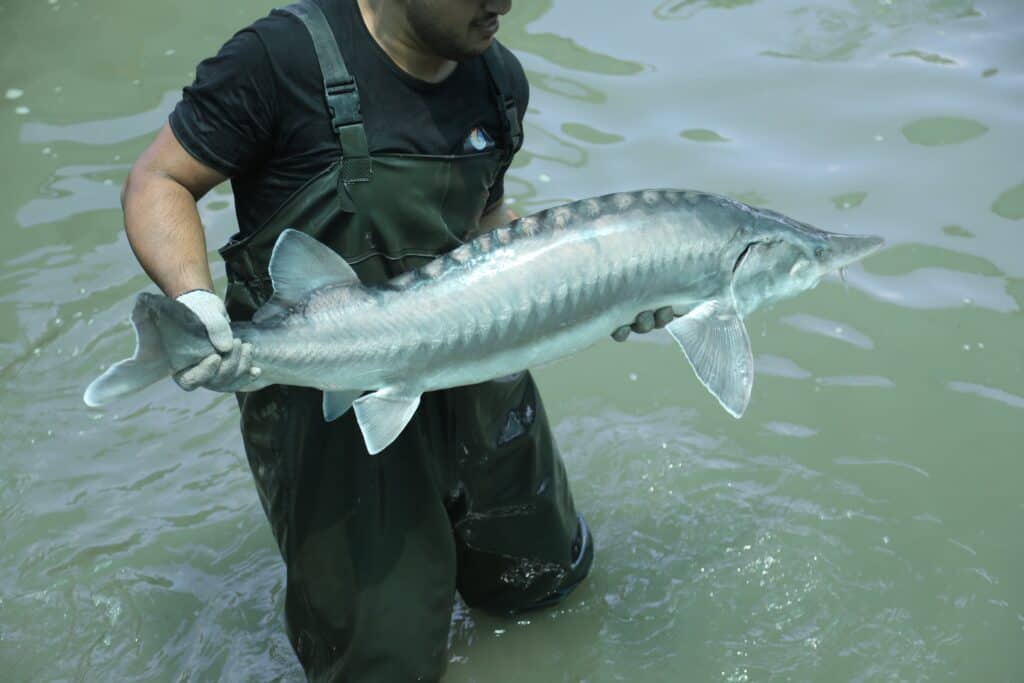
- Koli white fish, the most famous aquatic fish in the north
One of the most famous fish in the north of the country is the white fish, which has an elongated body with large white spots. The meat of this fish is very delicious, soft and white. But because it has many thorns, it will be a bit difficult to cook and eat it. You can eat this fish grilled, fried or steamed according to your taste.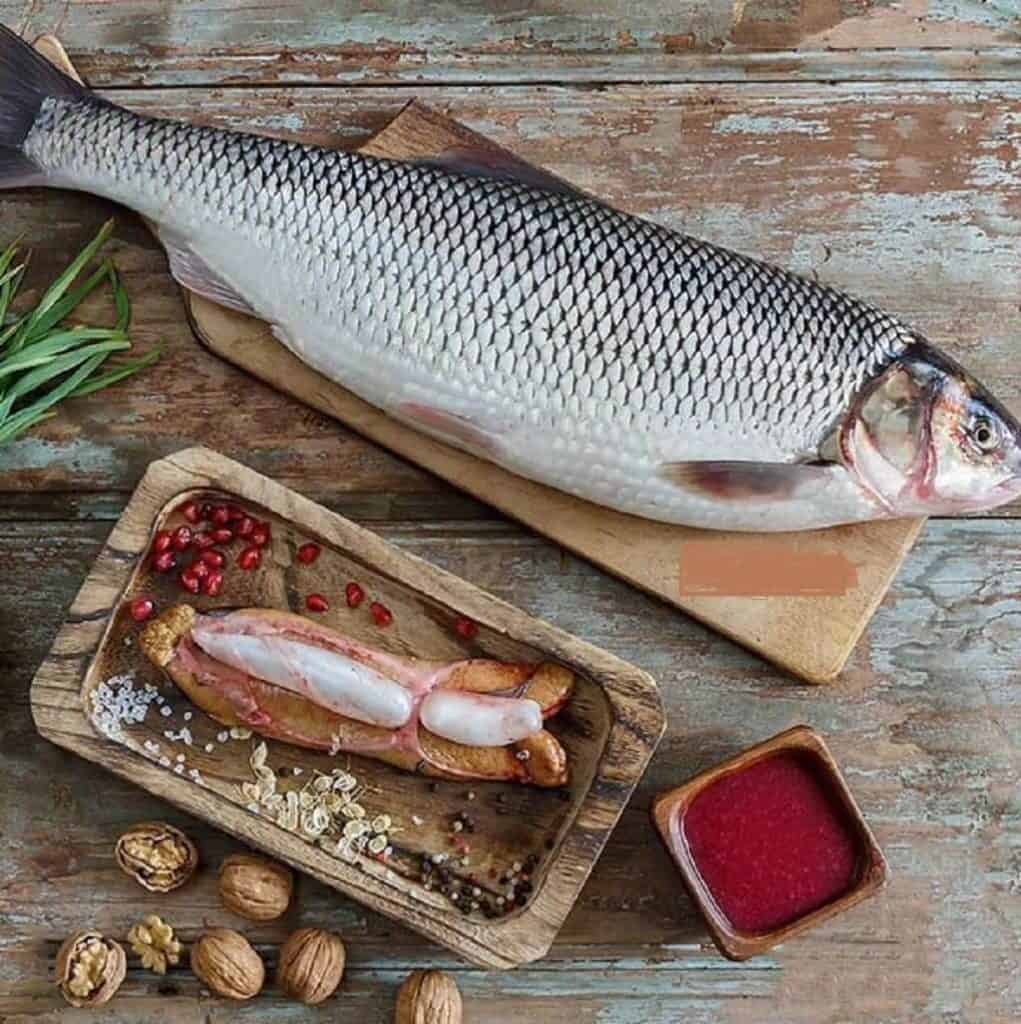
-
Trout, the best northern fish for grilling
Trout, which is one of the tastiest fish in the north, is found in two varieties, red spot and rainbow, both of which have a unique taste and are rich in protein and nutrients for the body’s health. This fish has razor blades, but most of them can be removed when cutting. Also, if it is seasoned with salt, pepper, and lemon and grilled, it will be much more delicious.
International types of fish and shrimp:
Types of fish:
- Tuna fish:
Tuna is a global favorite prized for its meaty texture and rich flavor. Found in oceans around the world, species such as yellowfin and albacore are popular catches that account for a significant share of the global seafood market.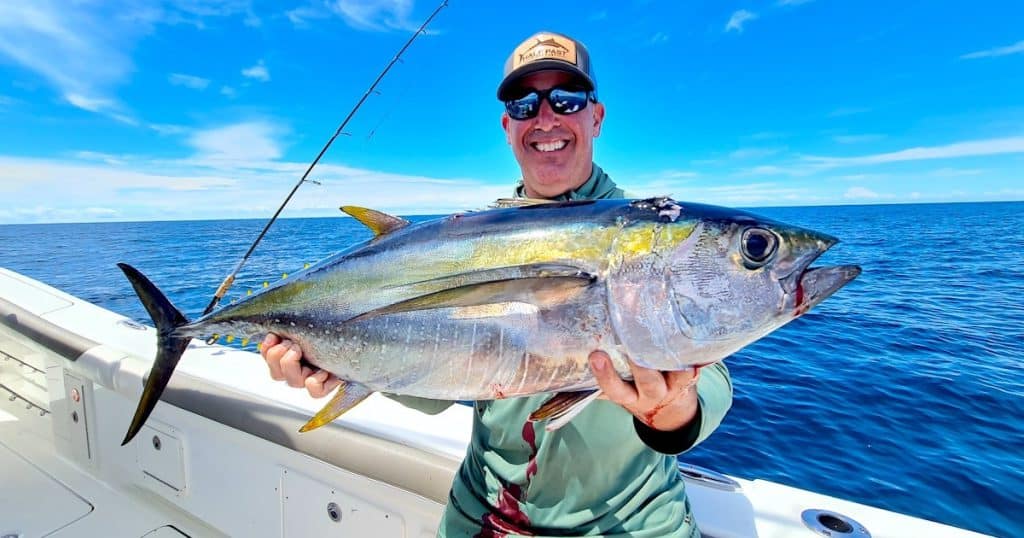
- Salmon fish:
Salmon is the most similar species to Trout, and the main difference is the color of the salmon meat, which tends to be orange. But both species are free-living fish. The main habitat of this type of fish is in the Atlantic and Pacific oceans. But free fish generally spawn in freshwater rivers and move against the direction of water flow. After spawning, they return to the ocean.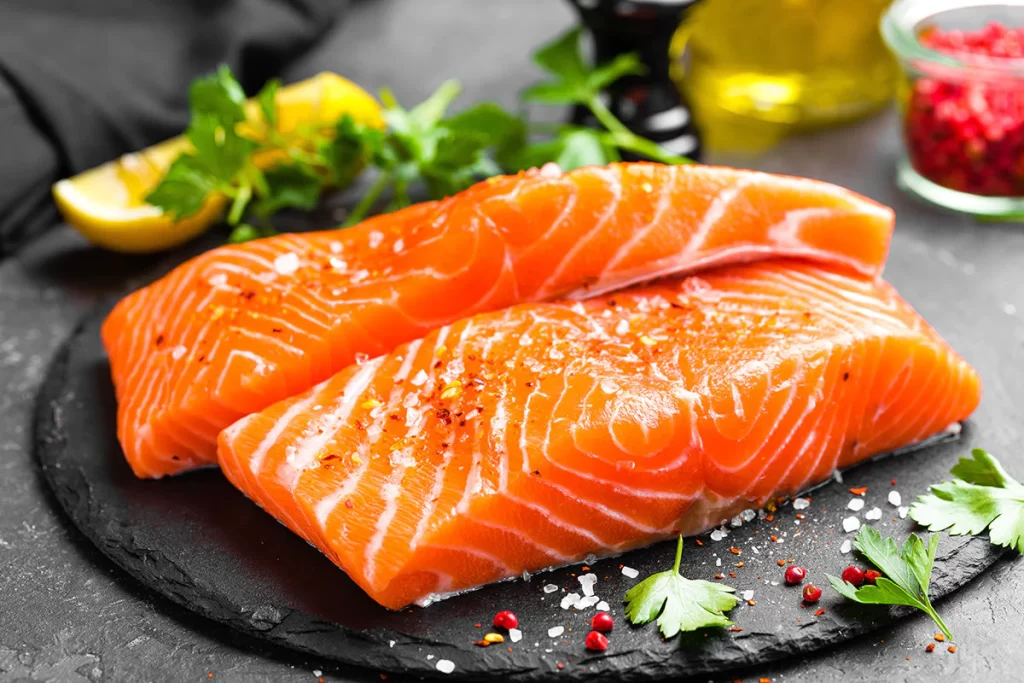
- Cod fish:
Cod, a cold water species, thrives in the North Atlantic. Known for its white flesh, cod is a versatile fish that can be used in everything from classic fish and chips to gourmet seafood dishes.
Shrimp species:
- White leg shrimp:
White shrimp, also known as Pacific white shrimp, is a farmed species worldwide. Its mild flavor and firm texture make it a popular choice in a wide variety of international cuisines. - Black tiger shrimp:
Recognized by its large size and distinctive black stripes, the black tiger shrimp is native to the Indo-Pacific region. With a bold taste and meaty texture, it is a sought-after species in local and international markets.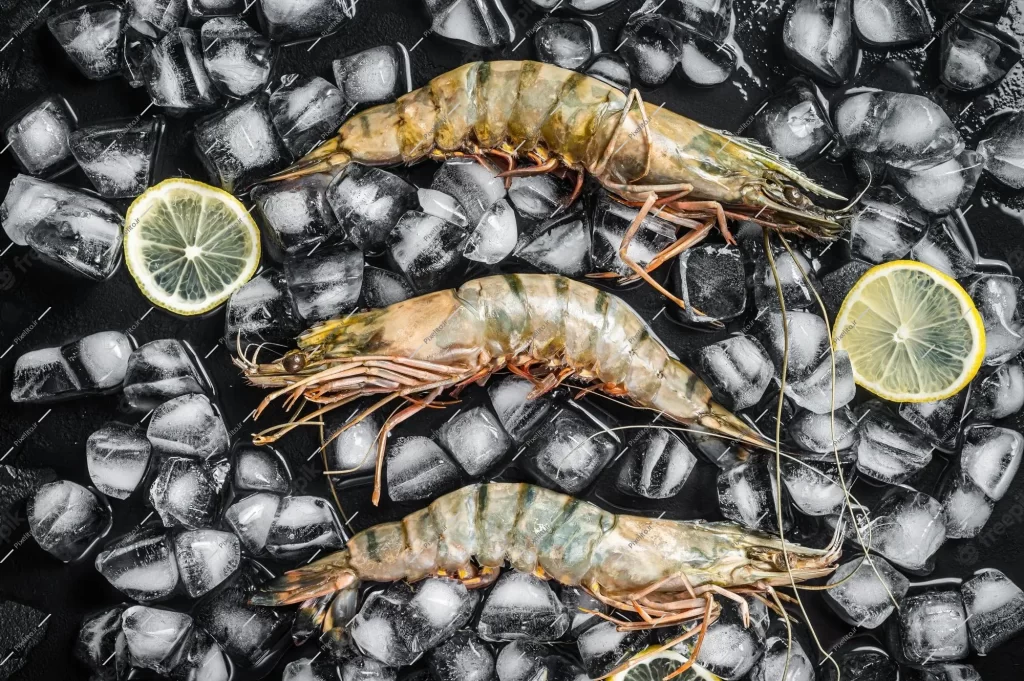
- Vanami shrimp:
Vannamei shrimp, native to the eastern Pacific, are now farmed around the world. Known for its sweet flavor and firm texture, this shrimp species is a versatile ingredient in a variety of culinary creations.
Catch and production statistics:
Global fishing statistics:
The fishing industry is the cornerstone of global food security, providing livelihoods for millions of people. In 2022, the top five fishing countries were China, Indonesia, India, Russia and the United States. Together, they account for a significant portion of the world’s total fisheries production.
Production of packaged fish and shrimp:
Packaging of fish and shrimp is an important step in ensuring product quality and safety. By 2023, global production of packaged fish and shrimp will exceed 25 million tons, demonstrating the industry’s commitment to meet consumer demands for convenient and safe seafood options.
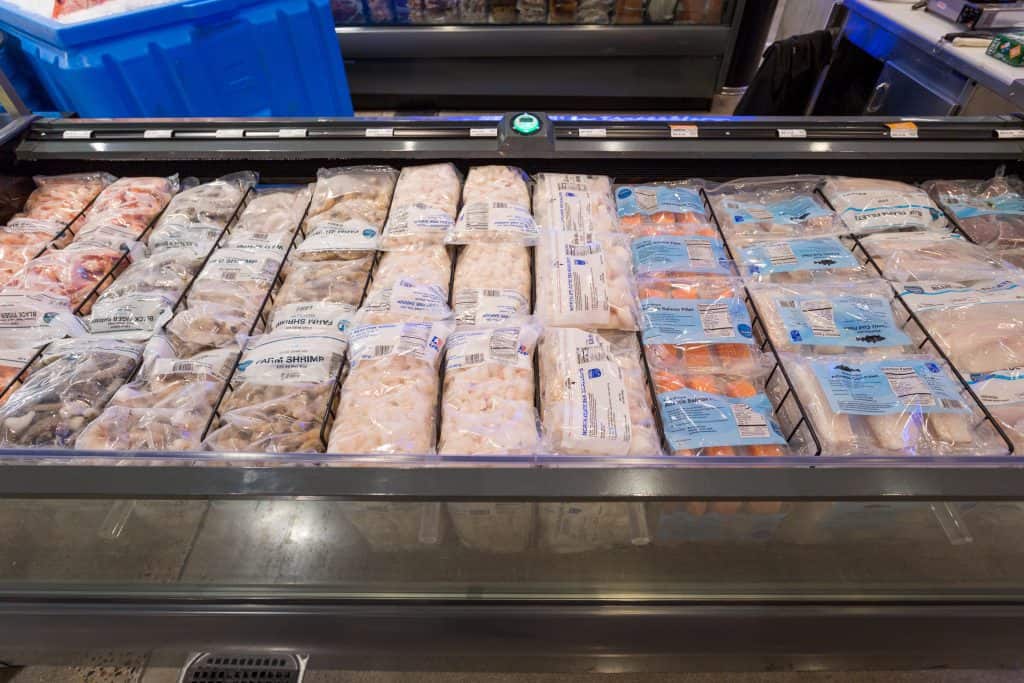
Fisheries maintenance conditions:
Cold storage facilities:
Maintaining the freshness and quality of seafood is very important and cold storages play an essential role in achieving this. In 2021, global cold storage capacity for fishery products exceeded 160 million cubic meters, ensuring that fish and shrimp retain their nutritional value and flavor from catch to consumption.
Technological innovations:
Advances in refrigeration and freezing technologies have revolutionized the storage and transportation of seafood. Rapid freezing techniques, such as blast freezing, have become industry standards and preserve the texture and flavor of packaged fish and shrimp.
Conditions for keeping fisheries at home
- Refrigeration techniques:
Proper cold storage is the cornerstone of maintaining the quality of packaged fish and shrimp. Follow these steps to keep your seafood fresh: - Temperature control:
Set your refrigerator at 4°C or less than 39.2°F. Maintaining a consistently low temperature helps slow bacterial growth and preserve the texture of seafood. - Storage period:
Consume packaged fish and shrimp within 1-2 days of purchase to ensure optimal freshness. If you don’t plan to use them right away, freeze them for a longer shelf life.
Freezing instructions:
Freezing is an excellent option to extend the shelf life of packaged fish and shrimp. Here’s how to do it effectively:
- Preparation:
Portion the seafood into serving sizes and wrap each portion tightly in plastic or aluminum foil. To prevent freezer burn, place these parts in sealed containers or sealable plastic bags. - to melt:
When ready to use, thaw frozen seafood overnight in the refrigerator. Avoid thawing at room temperature, as it promotes bacterial growth and compromises product quality.
Safe hygiene methods in the use of fisheries:
Safe practice is critical to preventing contamination and ensuring the safety of your seafood:
- Hand hygiene:
Wash your hands thoroughly before and after handling packaged fish and shrimp. If hands are not adequately cleaned, cross-contamination may occur. - Separate cutting boards:
Use separate cutting boards for seafood and other ingredients to prevent the transfer of bacteria. Clean and disinfect cutting boards and utensils after each use.
Fisheries monitoring quality:
Check the quality of your packaged fish and shrimp regularly to detect signs of spoilage:
- color and smell:
Fresh seafood should have a vivid color and a mild, ocean-like smell. Throw away items that have bad colors or strong and unpleasant odors. - Texture:
The texture of fish and shrimp should be firm and moist. If the meat looks slimy or has a slimy texture, it may indicate spoilage.
Smart purchase of fisheries:
Ensuring the quality of your seafood starts at the point of purchase:
- Check out the tags:
Look for reputable brands and check product labels for information on the source, production date, and storage instructions. Choose products that are vacuum-sealed or tightly packed. - Purchase from reliable sources:
Buy packaged fish and shrimp from trusted seafood markets or grocery stores that have a reputation for quality and freshness.
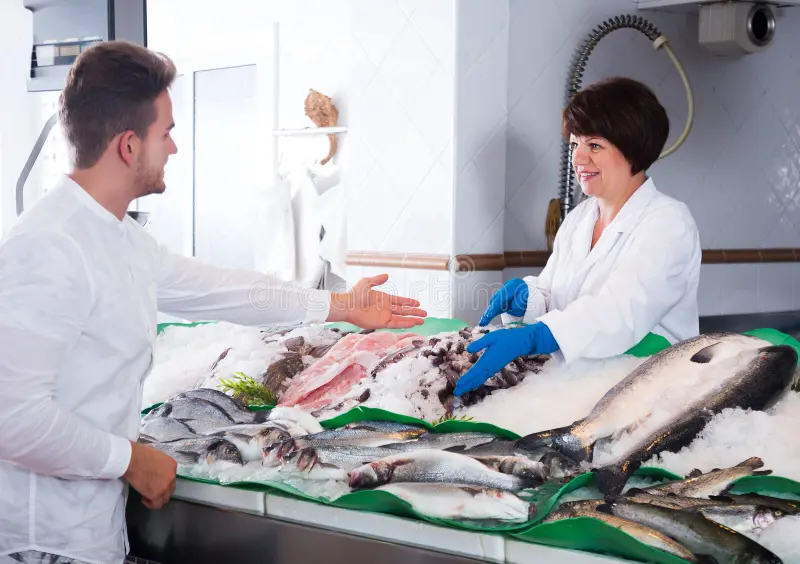
Fisheries circulation statistics:
Global distribution networks:
The packaged fish and shrimp circulation involves a complex global network of production, distribution, and consumption. In 2023, countries such as China, Norway, India, Vietnam, and the United States were the top seafood exporters, reflecting the international nature of the fisheries industry.
Iran’s fisheries outlook:
Iran, with its wide beaches along the Caspian Sea and the Persian Gulf, plays a significant role in the global fisheries market. In 2023, Iran’s total fish production will exceed 1.5 million tons, indicating the country’s share in the world’s seafood supply.
Result:
As we move deeper into the fishing industry, it becomes clear that the world’s appetite for seafood is insatiable. From crowded fishing grounds to sophisticated packaging facilities and global distribution networks, the journey of packaged fish and shrimp is a fascinating tapestry of economic, environmental, and cultural issues. As we move forward, balancing the growing supply and demand for seafood and ensuring the sustainability of our oceans and water bodies is essential. Only through responsible action and informed consumer choice can we ensure the future of this vital industry.

